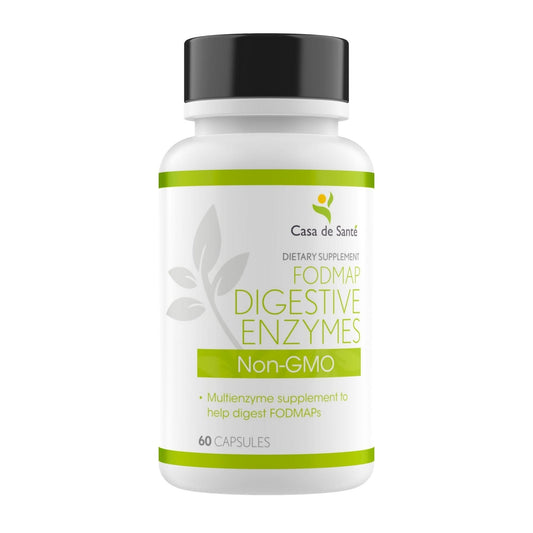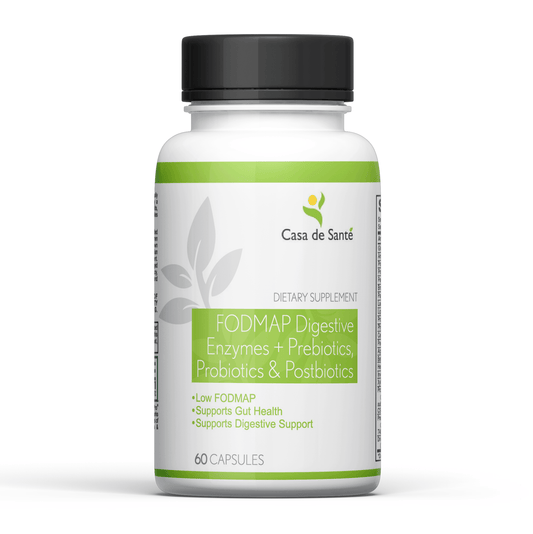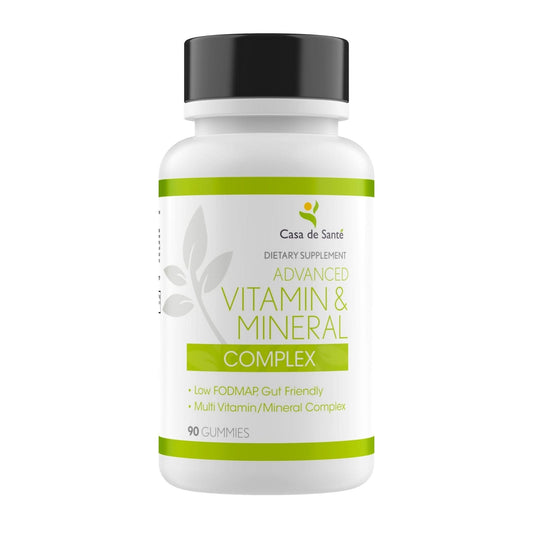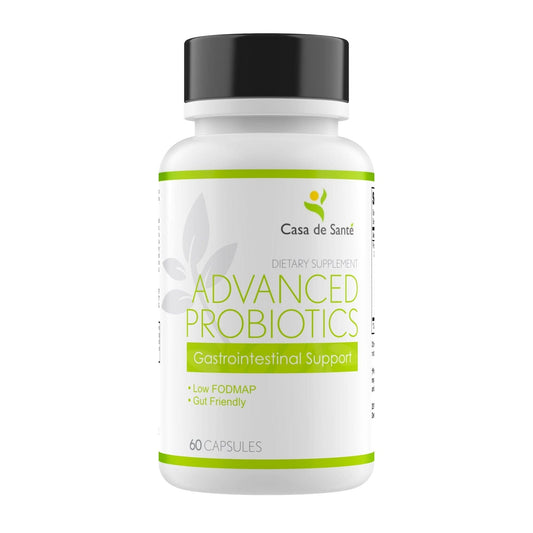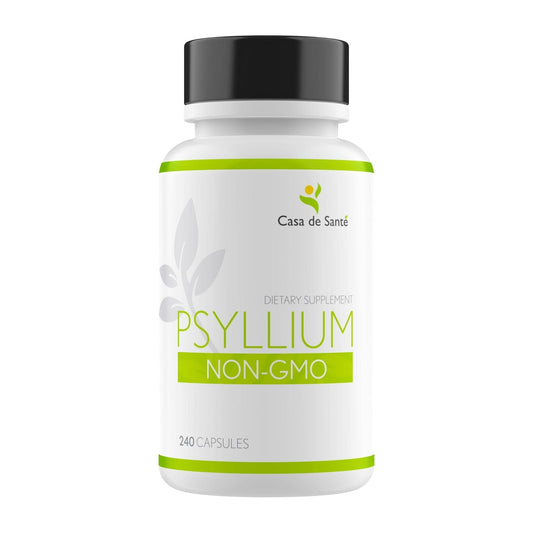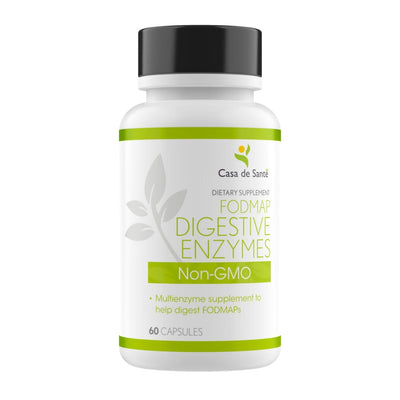Exploring Protein Low FODMAP: The Ultimate Guide to IBS-Friendly Protein Sources
Living with IBS can be a real challenge, especially when it comes to figuring out what to eat. That's where a low FODMAP diet comes in handy. But if you're worried about getting enough protein, don't stress. There are plenty of IBS-friendly protein options out there. This guide is all about helping you find those protein sources that won't upset your stomach. Let's dive into the world of low FODMAP proteins and make your meal planning a bit easier.
Key Takeaways
- Low FODMAP proteins are essential for managing IBS symptoms without sacrificing nutrition.
- Animal-based low FODMAP proteins include lean meats, fish, and eggs.
- Plant-based options like tofu, quinoa, and certain nuts are great low FODMAP protein sources.
- Incorporating a variety of low FODMAP proteins can help maintain a balanced diet.
- Consulting with a dietitian can provide personalized guidance for a low FODMAP diet.
Understanding Low FODMAP Proteins
What Are FODMAPs?
FODMAPs, a mouthful of an acronym, stands for Fermentable Oligosaccharides, Disaccharides, Monosaccharides, and Polyols. These are types of carbohydrates that some folks find hard to digest. Imagine eating something that just sits in your gut, causing all sorts of trouble like bloating and gas. That's what FODMAPs can do if your body doesn't handle them well. These carbs are found in a bunch of foods like certain fruits, veggies, and dairy. For people with IBS, consuming high FODMAP foods can be like opening a can of worms, leading to discomfort and digestive chaos.
Why Choose Low FODMAP Proteins?
Choosing low FODMAP proteins can be a game-changer if you have IBS. Proteins that are low in FODMAPs are less likely to trigger those unwanted digestive symptoms. Think of it as giving your gut a break. By opting for these proteins, you're not just avoiding discomfort but also ensuring that you're still getting the essential nutrients your body needs. It's all about finding that balance where you can enjoy your meals without the fear of a digestive meltdown.
Common High FODMAP Proteins to Avoid
When it comes to high FODMAP proteins, there are some usual suspects you might want to steer clear of:
- Certain Dairy Products: Milk, yogurt, and soft cheeses can be problematic due to lactose.
- Legumes: Beans and lentils are often high in FODMAPs, making them a no-go for sensitive tummies.
- Processed Meats: Some sausages and deli meats might contain high FODMAP ingredients like garlic or onion.
Finding the right proteins can feel like a puzzle, but once you know what to avoid, it becomes easier to piece together a diet that works for you.
Top Animal-Based Low FODMAP Protein Sources
Lean Meats and Poultry
When you're looking at low FODMAP diets, lean meats and poultry are your best friends. Chicken, turkey, and duck are all great options that won't mess with your digestive tract. They're versatile, easy to cook, and can be flavored in so many ways without adding high FODMAP ingredients. Just make sure to avoid any added seasonings that might contain garlic or onion, as these are common culprits.
Fish and Seafood
Fish and seafood are another solid choice for those on a low FODMAP diet. Fresh fish like salmon, tuna, and cod are all low in FODMAPs. Shellfish such as shrimp, crab, and lobster also fit the bill. These proteins not only help keep IBS symptoms at bay but also provide essential omega-3 fatty acids, which are good for overall health. A nutrition assessment can help determine the right portions for your needs.
Eggs as a Protein Source
Eggs are a fantastic source of protein and are naturally low in FODMAPs. They're quick to prepare and can be eaten in various forms—boiled, scrambled, or poached. Plus, eggs are packed with nutrients like vitamin B12 and selenium, making them a nutritional powerhouse. Just remember to keep your omelets free from high FODMAP veggies like onions.
Exploring Plant-Based Low FODMAP Proteins
Tofu and Tempeh
Tofu and tempeh are fantastic low FODMAP options that pack a protein punch. Firm tofu is especially suitable because the FODMAPs are significantly reduced during processing. Silken tofu, on the other hand, is a no-go due to its higher FODMAP content. Tempeh, made from fermented soybeans, is not only rich in protein but also offers probiotics that support gut health. The fermentation process helps reduce FODMAP levels, making it a great choice for those with IBS.
Quinoa and Buckwheat
Quinoa, often mistaken for a grain, is actually a seed and a complete protein source. It contains all nine essential amino acids and is naturally low in FODMAPs, making it a staple for salads and bowls. Buckwheat, another seed, is also high in protein and versatile in the kitchen. Whether you're baking or cooking up a pasta dish, buckwheat is a reliable low FODMAP option.
Nuts and Seeds
Nuts and seeds are small but mighty when it comes to nutrition. Chia, hemp, and pumpkin seeds are excellent protein sources and can be sprinkled on yogurt or added to smoothies. While peanuts are safe in moderation, other suitable nuts include pecans, almonds, and walnuts. Always keep portion sizes in mind to stay within low FODMAP limits.
Adopting a plant-based low FODMAP diet doesn't have to be limiting. With a bit of creativity, you can enjoy a variety of delicious and nutritious foods that support your digestive health.
Incorporating Low FODMAP Proteins into Your Diet
Meal Planning Tips
Planning meals around low FODMAP proteins doesn't have to be a headache. Start by making a list of safe proteins like chicken, fish, and tofu. These are versatile and can be used in many dishes. Then, think about what veggies and grains go well with these proteins. Preparing a weekly menu can save you time and stress. Make sure to include a variety of proteins to keep meals interesting.
- Organize your shopping list by protein, veggies, and grains.
- Prepare meals in advance, like grilling chicken for salads or making a big batch of quinoa.
- Use herbs and spices to add flavor without adding FODMAPs.
Cooking Techniques for Low FODMAP Proteins
Cooking low FODMAP proteins is all about keeping it simple. Grilling, baking, and steaming are great methods that bring out natural flavors without needing extra ingredients. Marinate meats with olive oil and herbs like rosemary or thyme. For tofu, try baking it with a sprinkle of salt and pepper for a crispy texture.
- Grill or bake meats to enhance their flavors.
- Use low FODMAP oils like olive or sunflower oil for cooking.
- Avoid high FODMAP ingredients like garlic and onion; use alternatives like garlic-infused oil.
Cooking low FODMAP proteins doesn't mean sacrificing taste. With a few tweaks, you can enjoy flavorful meals that are easy on your gut.
Snack Ideas with Low FODMAP Proteins
Snacking can be a challenge on a low FODMAP diet, but it’s doable! Hard-boiled eggs are a quick and easy option. You can also make a batch of roasted chickpeas or enjoy a handful of nuts like almonds or walnuts. If you’re on the go, pack some lactose-free yogurt with a sprinkle of chia seeds.
- Keep hard-boiled eggs ready in the fridge for a quick snack.
- Prepare roasted chickpeas seasoned with paprika or cumin.
- Enjoy a small portion of nuts, but remember to stick to serving sizes to keep it low FODMAP.
Benefits of Low FODMAP Proteins for IBS Management
Reducing IBS Symptoms
When you're dealing with IBS, every meal can feel like a gamble. Choosing low FODMAP proteins helps take some of the guesswork out. These proteins are less likely to cause bloating, gas, or discomfort, which are common complaints among IBS sufferers. By sticking to low FODMAP options, you can enjoy your meals without the usual worries. Imagine eating without the dread of what's coming next.
Improving Digestive Health
Low FODMAP proteins play a role in maintaining a balanced gut environment. They don't ferment in the gut like high FODMAP foods, which means less gas production and fewer digestive troubles. This can lead to a more stable digestive system overall. A happy gut often means a happier you!
Enhancing Nutritional Intake
Even on a restricted diet, it's important to get all the nutrients your body needs. Low FODMAP proteins ensure you're not missing out on essential amino acids and other nutrients. This way, you can keep your energy levels up and support your body's needs without triggering IBS symptoms. Think of it as getting the best of both worlds: nutrition and comfort.
Balancing diet and IBS management might feel like walking a tightrope, but with low FODMAP proteins, it becomes a bit more manageable. They offer a way to nourish your body without the usual discomfort, making life with IBS a little less daunting.
Challenges and Solutions in a Low FODMAP Protein Diet
Overcoming Nutritional Deficiencies
Switching to a low FODMAP diet can sometimes lead to nutritional gaps, especially when it comes to protein. It's all about balance. You want to make sure you're getting enough protein without triggering symptoms. Here are a few tips:
- Diversify Your Protein Sources: Include a mix of animal and plant-based proteins like eggs, fish, and tofu.
- Monitor Portion Sizes: Use tools like the Monash University FODMAP app to keep track of safe amounts.
- Consider Supplements: If you're struggling to meet your protein needs, a protein supplement might help.
While it might seem daunting at first, with a bit of planning, you can enjoy a balanced diet.
Finding Variety in Meals
Eating the same meals can get boring fast. To keep things interesting:
- Experiment with Herbs and Spices: Since garlic and onions are out, try ginger, chives, or garlic-infused oil.
- Try New Recipes: Look for low FODMAP recipe books or blogs for inspiration.
- Mix and Match Ingredients: Use different combinations of low FODMAP foods to keep your meals exciting.
Working with a Dietitian
A dietitian can be a great ally in managing a low FODMAP diet. They can:
- Provide Personalized Advice: Tailor your diet to your specific needs and preferences.
- Help Identify Trigger Foods: Work with you to pinpoint which foods cause symptoms.
- Offer Support and Accountability: Regular check-ins can keep you on track and motivated.
Don't hesitate to reach out for professional guidance. A dietitian can make navigating a low FODMAP diet much easier.
Following a low FODMAP protein diet can be tough, but there are ways to make it easier. You might face issues like finding the right foods or dealing with cravings. However, with the right strategies, you can overcome these challenges. For more tips and support, visit our website and discover how we can help you succeed on your journey!
Conclusion
So, there you have it, folks. Navigating the world of low FODMAP proteins might seem like a maze at first, but with a bit of patience and some trial and error, you'll find your groove. Remember, it's all about finding what works for you and your tummy. Whether you're a fan of tofu, chicken, or eggs, there's a protein source out there that won't upset your stomach. Keep experimenting, stay informed, and don't hesitate to reach out to a dietitian if you need a little extra guidance. Your gut will thank you for it!
Frequently Asked Questions
What does FODMAP stand for?
FODMAP stands for Fermentable Oligo-, Di-, Mono-saccharides and Polyols. These are short-chain carbs that some people can't digest well.
Why should I eat low FODMAP proteins?
Low FODMAP proteins can help people with IBS avoid tummy troubles like gas and bloating.
Are eggs low FODMAP?
Yes, eggs are low FODMAP and are a great protein option for people with IBS.
Can I eat nuts on a low FODMAP diet?
Yes, but only certain nuts like almonds and walnuts in small amounts are low FODMAP.
Is tofu a good protein source for low FODMAP diets?
Yes, firm tofu is low FODMAP and a great protein choice for those following this diet.
How can I find more low FODMAP foods?
You can check resources like the Monash University FODMAP app to find more low FODMAP foods.



